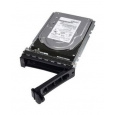D-Link DXS-3410-32SY/E
Kód:
385656
Záruka:
5 Om.Doživot
Popis a parametre
D-Link DXS-3410-32SY/E
"10G Layer 3 Stackable Managed Switches 28*10G SFP+ + 4*25G SFP28 Multi-Gigabit L3 10G Stackable Managed Switch DXS-3410-32SY Overview: DXS-3410 Series: High-Performance 10G Layer 3 Stackable Managed Switches Port Configuration: 28 x 10G SFP+ Ports: Provides high-speed connectivity using Small Form-Factor Pluggable (SFP+). 4 x 10/25G SFP28 Ports: For creating 25G or 10G high core network connections in the SFP28 format. Overview: The DXS-3410 Series represents a cutting-edge line of 10G Layer 3 Stackable Managed Switches designed to establish secure and efficient enterprise or metro Ethernet access networks. With robust support for multicasting and enhanced security features, these switches stand out as an ideal solution for multi-Gigabit access layer connectivity. Key Features: Versatile Connectivity: Equipped with multi-Gigabit Ethernet and SFP+ network connection options. Models with multi-Gigabit Ethernet and SFP28 network connections for enhanced capabilities. High-Speed Performance: Each model features 10G fiber ports, providing exceptional speed and performance. Four dedicated 10/25G SFP28 ports for increased versatility and high-speed data transfer. USB 2.0 Port for Enhanced Functionality: Includes a USB 2.0 port, facilitating seamless booting of images and direct uploading of configuration files. Users can conveniently save syslog files directly to a USB 2.0 storage device, streamlining management tasks. Secure and Efficient Networking: Designed for secure enterprise and metro Ethernet access networks, ensuring end-user connectivity with robust security measures. Multicasting Capabilities: Supports multicasting, enabling efficient communication and data distribution in network environments. Applications: Enterprise Networks: Ideal for creating secure and high-performance enterprise networks with 10G connectivity. Metro Ethernet Access: Well-suited for metro Ethernet access networks, providing reliable and scalable connectivity. Enhanced Security: Enhances network security, making it suitable for environments where data protection is paramount. Multi-Gigabit Access Layer Solution: A reliable choice as a multi-Gigabit access layer solution, meeting the demands of modern network infrastructures. A versatile switch designed for simplified network deployment and robust functionality. Variety of Interface Combinations: Enables customization to address specific network requirements, ensuring scalability and adaptability to diverse environments. SFP+ Ports: With 28 x SFP+ ports, the switch accommodates high-speed fiber connections, ideal for data-intensive tasks and long-distance connectivity. 10/25G SFP28 Ports: The availability of 4 dedicated 10/25G SFP28 ports provides flexibility for high-speed connections, catering to modern core networking demands. Reliability: Redundant Power Supply (RPS) Support: Offers enhanced reliability by allowing the integration of redundant power supplies, minimizing the risk of power-related failures. Ethernet Ring Protection Switching (ERPS): Incorporates ERPS for ring-based network protection, ensuring rapid fault detection and recovery, thus minimizing downtime. Spanning Tree Protocols: Supports IEEE 802.1D/802.1w/802.1s Spanning Tree Protocols, mitigating the risk of network loops and enhancing overall stability. Loopback Detection (LBD): Identifies and prevents network loops promptly, contributing to the stability and resilience of the network. Smart Fan with Quiet Mode Design: Utilises a smart fan design that adjusts fan speed based on system requirements, maintaining optimal temperature without unnecessary noise. L3 Features: Static Route: Employs static routing to efficiently direct traffic, optimizing network performance. RIP/RIPng: Supports Routing Information Protocol (IPv4/IPv6), enabling dynamic routing for better adaptability to changing network conditions. OSPFv2/v3: Implements Open Shortest Path First (OSPF) for dynamic and efficient routing in complex network environments. Lossless Ethernet via Data Centre Bridging (DCB) - Priority-based Flow Control (PFC) Overview of feature: Priority-based Flow Control (PFC) is a crucial component of Lossless Ethernet through Data Centre Bridging (DCB). This feature addresses the challenge of congestion in data centre networks by introducing a mechanism that ensures the lossless transmission of critical data packets. PFC operates by assigning priorities to different types of traffic, allowing the network to intelligently manage and prioritize data flows. Key Components and Mechanisms: Traffic Prioritisation: PFC classifies network traffic into different priority groups, typically based on IEEE 802.1p priority tags or Differentiated Services Code Point (DSCP) markings. This categorization enables the network to distinguish between various types of data and assign relative priorities. Per-Priority Pause Frames: PFC introduces the concept of per-priority pause frames. When congestion is detected in a particular priority group, PFC triggers the transmission of pause frames specific to that priority. These pause frames instruct the connected devices to temporarily halt the transmission of packets belonging to the congested priority class. Selective Congestion Management: Unlike standard CSMA/CD Ethernet, where all traffic is treated equally, PFC allows for selective congestion management. In the event of network congestion, only the priority classes experiencing congestion are paused, preventing the loss of critical data while allowing less critical traffic to continue. Enhanced Quality of Service (QoS): By providing a granular approach to managing network congestion, PFC significantly enhances the Quality of Service (QoS) in data centre environments. Critical applications, such as storage or latency-sensitive workloads, can maintain a consistent and reliable performance level. Benefits: Minimised Packet Loss: PFC minimizes packet loss by selectively pausing traffic in congested priority classes, ensuring the delivery of critical data without disruption. Improved Application Performance: Applications requiring low-latency and consistent throughput, such as storage area networks (SANs) and real-time communications, benefit from the improved performance and reliability afforded by PFC. Efficient Resource Utilisation: PFC optimizes network resources by preventing unnecessary packet retransmissions and reducing the likelihood of network congestion, leading to more efficient utilization of available bandwidth. Adaptability to Diverse Workloads: The ability to prioritise and protect specific types of traffic makes PFC adaptable to the diverse and dynamic workloads typically encountered in modern data centre environments. Your Example Use Cases could be for PFC: Storage Networks: PFC is particularly beneficial in storage networks, where maintaining low-latency and lossless data transmission is critical for the reliability and performance of storage applications. Real-time Applications: Applications requiring real-time data, such as video conferencing or live streaming, can leverage PFC to ensure consistent and uninterrupted data flow. Mission-Critical Workloads: Environments hosting mission-critical workloads, where any form of data loss is unacceptable, find PFC indispensable for maintaining data integrity and application reliability. Operations, Administration, and Maintenance (OAM): Ethernet Link OAM: Adheres to IEEE 802.3ah standards, offering robust link-level OAM capabilities for monitoring and maintenance. Service OAM: Incorporates IEEE 802.1ag/ITU-T Y.1731 for service-level OAM, ensuring efficient management and troubleshooting capabilities. High Bandwidth Stacking: Physical Stack: Supports a physical stack of up to 9 units, fostering seamless integration and scalability in growing network infrastructures. Long-Distance Stacking: Enables stacking over fiber, allowing for extended reach between stacked units, providing flexibility in network design. Physical Stacking Bandwidth: Provides a substantial 200 Gbps per device physical stacking bandwidth, ensuring high-speed data transfer and robust inter-unit communication.** Offers flexible configuration options for either 10G or 25G connectivity using SFP28 transceivers. Optional Redundant Power Supply: Supports DPS-500A or DPS-500DC: Allows for redundancy and reliability with optional redundant power supplies and DC project option. Console and Management Ports: RJ-45 Console Port: Enables out-of-band Command Line Interface (CLI) management. Management Port: 10/100/1000BASE-T RJ-45 port for out-of-band IP management. Stacking Ports: 4 Ports Available for Stacking: Facilitates the creation of high-bandwidth stacks for improved network scalability and redundancy. USB Ports: 1 x USB 2.0 Type A Port: Used for storing configuration files, boot images, and syslog data. Performance: Switching Capacity: 760 Gbps: Ensures high-speed data throughput within the switch. 64-Byte Packet Forwarding Rate: 565.44 Mpps: Represents the number of 64-byte packets the switch can forward per second. Packet Buffer Memory: 4 MB: Physical Characteristics: Dimensions: 441.0 x 250 x 44.0 mm: Specifies the physical size of the switch for proper placement and installation. Weight: 3.80 kg: Indicates the mass of the switch for handling and mounting considerations. Ventilation: 3 x Smart Fans: Incorporates intelligent fans for efficient cooling. Acoustics: Max 53.0 dB, Min 28.8 dB: Describes the noise levels produced by the switch during operation. Heat Dissipation: 354.86 BTU/h Quantifies the amount of heat generated by the switch. Power Input: 100 to 240 VAC, 50 to 60 Hz: Specifies the accepted voltage range for the power supply. Power Consumption: Max Power Consumption: 104.0 W: Represents the maximum power draw during operation. Standby Power Consumption: 29.3 W: Represents the power usage when the switch is in standby mode. Temperature and Humidity: Operating Temperature: 0 to 50 °C (32 to 122 °F): Specifies the recommended temperature range for normal operation. Storage Temperature: -40 to 70 °C (-40 to 158 °F): Specifies the recommended temperature range for storage. Operating Humidity: 10% to 90% RH: Specifies the recommended humidity range for normal operation. Storage Humidity: 5% to 90% RH: Specifies the recommended humidity range for storage. Emission and Safety: EMI: FCC Class A, CE Class A, VCCI Class A, IC, RCM, BSMI: Ensures compliance with electromagnetic interference standards. Safety: CB, cUL, BSMI: Certifies adherence to safety standards. Software Features: Stackability: Physical stacking supports up to 9 units per stack with up to 200 Gbps stacking bandwidth. Virtual stacking with D-Link Single IP Management (SIM) allows up to 32 units per virtual stack. Layer 2 Features: MAC Address Table: 32K Entries: Accommodates a large number of MAC addresses for efficient network address resolution. Flow Control, Jumbo Frames (up to 10 Kbytes): Enhances network performance with flow control and support for larger frames. Link Aggregation: 802.1AX/802.3ad: Facilitates the bundling of multiple links for increased bandwidth and redundancy. Spanning Tree Protocols: 802.1D STP, 802.1w RSTP, 802.1s MSTP: Ensures loop-free topology and rapid convergence in the network. Quality of Service (QoS): 802.1p, 8 Queues per Port: Enables prioritization of traffic with eight queues per port. Weighted Round Robin, Strict Priority, WDRR: Implements various QoS mechanisms for efficient traffic management. Bandwidth Control, Three Colour Marker, Congestion Control: Allows for precise control and monitoring of bandwidth usage and congestion. Access Control List (ACL): ACL Based on Various Parameters: Includes 802.1p priority, VID, MAC address, Ether Type, VLAN, IP address, IP preference/ToS, DSCP mask, Protocol type, etc. Time-Based ACL: Allows the definition of ACL rules based on time intervals. Security Features: Port Security: Supports up to 12K MAC addresses per port. Storm Control, Safeguard Engine: Mitigates the impact of broadcast, multicast, and unicast storms. DHCP/DHCPv6 Snooping, IP Source Guard, ARP Spoofing Prevention: Enhances security by preventing various types of attacks. SSL, SSH, BPDU Attack Protection, DOS Attack Prevention: Provides secure management access and protection against specific attacks. AAA (Authentication, Authorization, and Accounting): 802.1X Authentication: Enhances network security through port-based access control. RADIUS/TACACS+ Accounting, Web-based Access Control: Facilitates accounting and access control through RADIUS/TACACS+ and web-based mechanisms. MAC-Based Access Control: Allows access control based on MAC addresses. Green Features: Energy-Efficient Ethernet (EEE): Optimizes power consumption during periods of low network activity. Power Saving by Link Status, LED Shut-Off, Port Shut-Off, System Hibernation: Implements various mechanisms to reduce power consumption. OAM (Operations, Administration, and Maintenance): Ethernet Link OAM, Connectivity Fault Management (CFM), Optical Transceiver Digital Diagnostic Monitoring (DDM): Provides tools for efficient network maintenance and troubleshooting. Management: Web-Based GUI, Command Line Interface (CLI), SNMP v1/v2c/v3: Offers multiple management interfaces for user convenience. Syslog, sFlow, RMON, LLDP, Zero Touch Provisioning (ZTP): Supports detailed management protocols and tools for monitoring and configuration with LLDP/LLDP-MED support more details in the Datasheet. Layer 3 Features: IPv4/IPv6 Static Route, OSPF, RIP, VRRP, IP Helper: Enables Layer 3 routing capabilities for efficient network traffic forwarding. MIB Compliance: RFC791, RFC768, RFC793, RFC792, RFC2463, RFC4443, RFC826, RFC1321: Complies with various MIB structures and standards for efficient management. RFC2571, RFC1213, RFC1493, RFC1157, RFC2819, RFC2021, RFC1398, RFC2674, RFC4293: Supports SNMPv1/v2c/v3 and RMON MIB structures. RFC1901, RFC1902, RFC1903, RFC1904, RFC1905, RFC1906, RFC1907, RFC1908, RFC2578, RFC3418: Complies with SNMPv2 MIB structures. RFC4293 IPv6 MIB, RFC4133 Entity MIB, RFC2782 VRRP MIB, RFC3621 Power Ethernet MIB, DDP MIB, LLDP-MED MIB, IPv4 Multicast Routing MIB: Ensures compatibility with IPv6 and various specialized MIB structures. RFC Standard Compliance: RFC791 IP, RFC768 UDP, RFC793 TCP, RFC792 ICMPv4, RFC2463, RFC4443 ICMPv6: Adheres to standard protocols governing IP, UDP, TCP, and ICMPv4/v6. RFC826 ARP, RFC1338, RFC1519 CIDR, RFC2474, RFC3168, RFC3260 DS Field: Complies with ARP, CIDR, and DS Field standards. RFC1321, RFC2284, RFC2865, RFC2716, RFC1759, RFC3580, RFC3748 EAP: Supports Extensible Authentication Protocol (EAP). RFC2571 SNMP Framework, RFC3246 Expedited Forwarding PHB: Adheres to SNMP framework and traffic forwarding standards.".
ParametrePridať do porovnania
Maximální počet portů
24
Provedení
Rack mounted 19"
Technologie
10 Gigabit Ethernet
Management
SNMP/RMON
Vlastnosti switche
Rozšiřitelnost
Funkce
L3
Počet portů Combo
4
Počet portů LAN
20
Ventilátor
Ano
Přenosová rychlost LAN (Mb/s)
10000
Počet portů LAN
20
Přenosová rychlost LAN (Mb/s)
10000
Maximální počet portů
24
Počet portů Combo
4
D-Link DXS-3410-32SY/E
Naposledy navštívené


